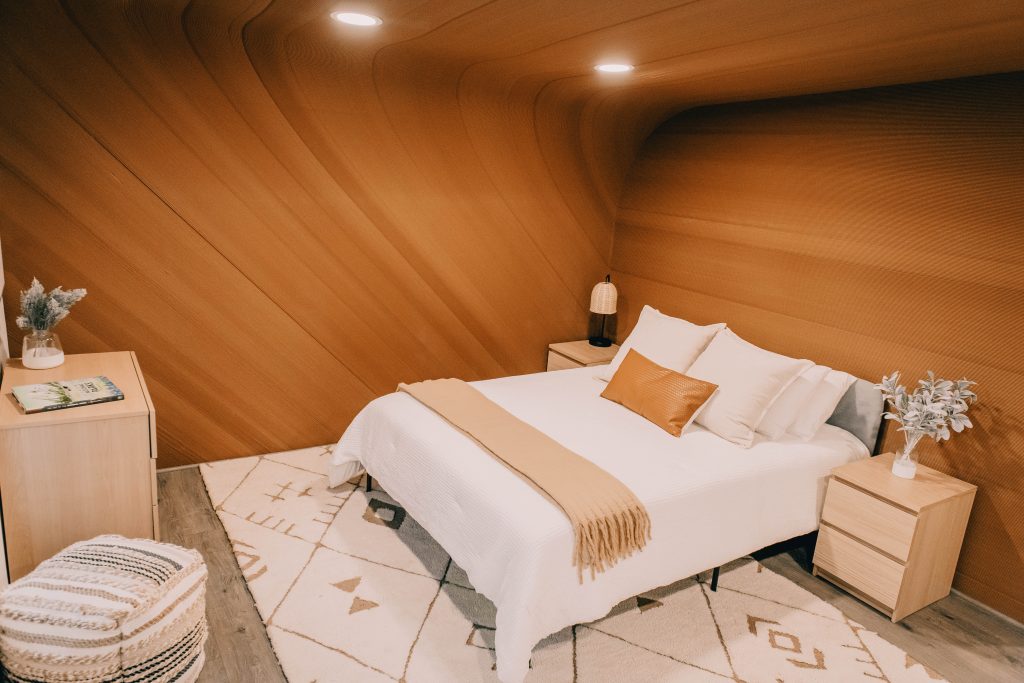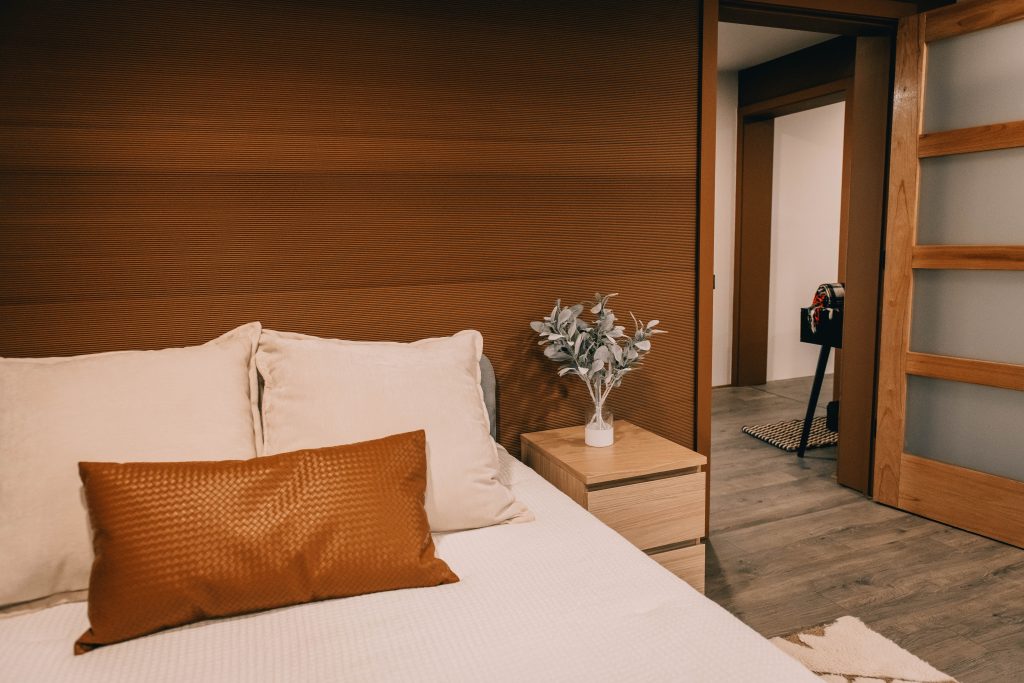


In 1983, Chuck W. Hull patented the first “apparatus for production of three-dimensional objects by stereolithography”—also known as a 3D printer.
It would take decades before 3D printing became more mainstream and commercially viable. Today, this technology, now known as additive manufacturing, is being used at the University of Maine’s Advanced Structures & Composites Center in collaboration with Oak Ridge National Laboratory to produce prototype homes using a combination of a bio-based polymer and residual wood products.
“We work with Oak Ridge National Lab in a program called Hub and Spoke, and through our work we have collaborated on a lot of new material [development]—in particular, bio-based materials used to replace non-bio-based materials,” explains Evan Gilman, chief engineer, additive manufacturing,
with the Advanced Structures & Composites Center.
The idea is that the unique bio-based materials can be combined with wood residuals, of which there is an excess of over a million tons produced in the Northeast each year. “[The wood is] not being used but could be, and 3D printing would allow us to utilize this in homes. A lot of our work has been to develop the material to be used for 3D printing. An extension of our materials development project is to demonstrate that [the residual wood] has a useful purpose for something such as a house.”
Most species of wood can be used for this application, and it has been a major focus from the beginning of the program.
With the largest polymer 3D printer in the world, the University of Maine has the ability to make very large additive structures—even as big as houses—with this form
of manufacturing.
“What we see, and what this house is a demonstration of, is an opportunity to solve several problems,” he says. One is Maine’s low-income housing shortage. “There’s a need for at least 20,000 low-income houses right now,” he says. Another is what to do with excess wood residuals. “In Maine, the pulp and
paper industry has been shrinking. So the wood residuals that used to be part of pulp and paper [manufacturing] are not being used and are now in excess.”
As a result, there is an opportunity to find a way to use that excess material in something like home construction.
“Additive manufacturing uses this material and provides a great solution because the process can take the wood residuals, turn them into wood fibers, and mix them into the 3D printing material,” Gilman explains. “It’s a way to incorporate those wood residuals that would otherwise not be useful and can’t be used for other conventional building materials.”
3D printing is also less labor intensive and, during a period of economic labor shortages, could provide another way to construct a home without the need for as much labor because the printer is doing more of the work.
“A lot of the work we’re doing is to make this technology viable for more mass production. So not only are we working on the material formulation to make it better, we are
working on the design and printing process,” he says. “We do think this can be a competitive technology with more research. We’re not suggesting it will take over home technology, but it is part of the solution.”
Going forward, the university plans to expand its lab facility in the next two to three years to scale up their research capacity to make this technology market ready sooner.
“We want to make [the technology] viable and transition it to industry,” Gilman says. “We will probably make more homes in our effort to refine the technology.”
— Joel Kranc
PHOTOS: Courtesy of University of Maine’s Advanced Structures & Composites Center





